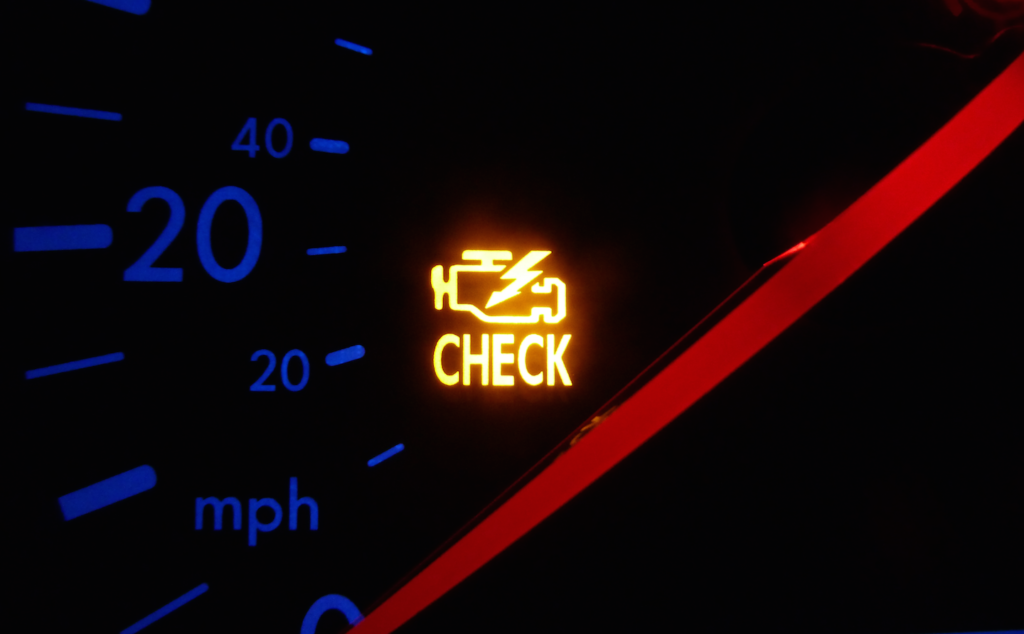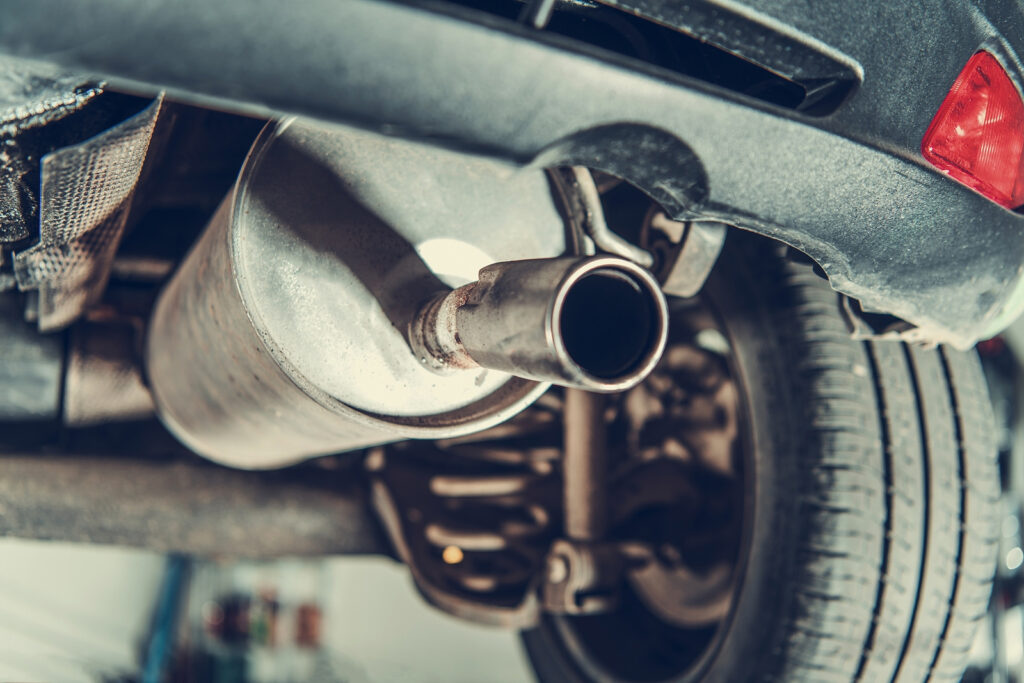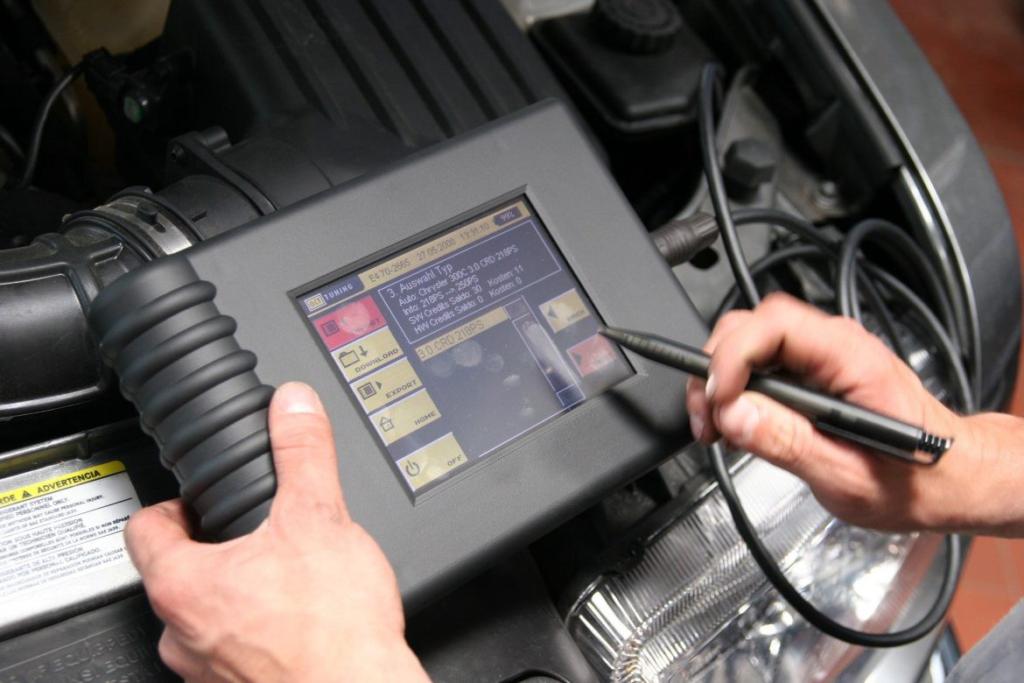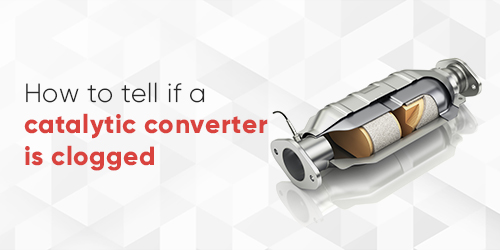Today, more than 90% of cars run on internal combustion engines (ICE) – and this type of engine can stay here until electric vehicles are fully adopted. However, this situation can also create harmful toxic chemical compounds that harm the environment. To combat these harmful emissions, car catalytic converters come to rescue. They use precious metals to convert poisonous gases into non-hazardous substances. Due to the increase in global environmental awareness, this exhaust system component is considered an important invention in the history of automobiles.
Catalytic converters help combat harmful emissions by using precious metals to convert toxic gases into non-hazardous substances.
Symptoms of Clogged catalytic converter
A clogged catalytic converter is not the same as a chemically worn or damaged as it creates excess exhaust pressure. Such blockages prevent the engine from “breathing” properly because it restricts exhaust flow – which can further create engine performance problems.
Signs of a clogged catalytic converter:
- Illuminated fault indicator light
The check engine light reflects you that “I need to see a doctor.” It alerts you to some problems that can make the performance of your engine inadequate and inefficient.

The control engine lighting indicates various reasons. It is suggested to hire a mechanic to diagnose the issue after seeing this warning.
- Difficulty in starting and stopping the engine
Excessive exhaust pressure can suffocate and cause the engine to stall. If it gets too congested, you may find your motor running and idle for a few minutes, only to die.
- Less Fuel-saving and lower engine performance
A clogged catalytic converter prevents your engine from breathing properly. It can cause a lack of acceleration and overall performance. Also, there is a decrease in fuel savings.
- Unsuccessful emission test
Clogging can cause the inspection engine to burn out, causing you to pass the emission test in many places. If a clogged cat is detached from the inside, it is unlikely that your car will pass the exhaust gas emission test.
As mentioned earlier, clogging can even lead to the fragmentation of catalyst materials. If you suspect this damage level, knock the catalytic converter down and listen to the noisy sounds.

A clogged catalytic converter can cause the test engine to burn out and cause you to pass an emission test.
Methods of diagnosing car catalytic converter failure
An experienced mechanic will detect a clogged converter by temporarily removing the oxygen sensor or open the exhaust pipe. If the engine’s performance improves, the catalytic converter is more likely to be the component causing the problem.
You can check the structure of the converter for harmful damage while passing over road debris.
Test for back pressure
Measuring backpressure is another way to confirm your suspicion. All you need is a low-pressure gauge or a kit that tests the primary pressure.
For accurate readings, use a digital manometer or a pressure gauge with different units of measurement.

In case your engine has a secondary air injection system, you can disconnect the control valve and install your pressure gauge. However, for accurate results, connect the control valve to the exhaust system before the converter.
You can also drill a hole along the exhaust pipe to install the pressure gauge. It is the best option for an old car, where O2 can get damaged.
Ann idle vehicle’s backpressure may vary depending on its year of manufacture, a model of manufacture, and type. Typically, an idle engine should have a maximum of 1.5 PSI. Of course, some machines can be upgraded, but the basic rules are 1.5 PSI and below.
When the car is rotated at 2000 RPM and stable at 3 PSI or lower, you probably won’t have problems with your catalytic converter. If it is variable or exceeds 3 PSI despite having a stable RPM, this is a good indication that the back pressure is increasing.
Resetting the engine increases the pressure, which is normal. However, at a stable RPM, an abnormal increase in pressure may indicate a possible strain.
Other methods of checking back pressure
You can check the pressure with a vacuum gauge. Connecting the manometer to a collector vacuum source is much easier than joining the scale to the exhaust.

Another way of checking the backpressure is by observing the scanning tool and considering parameters such as the versatile absolute pressure (MAP) and the calculated load.
Replacing or repairing a catalytic converter
The clogged catalytic converter needs replacement. While catalytic converter cleaner claims the same but you can’t believe everything you read.
Working of the catalytic converter
The catalytic converter reduces the emissions from the engine using a chemical reaction. There are two main sections. The first is a catalyst with a combination of platinum and rhodium. It works by breaking down nitric oxides (NOx) into nitrogen and oxygen molecules.
As the exhaust gas moves further, it passes through a second catalyst, a combination of platinum and palladium. It is where double oxidation takes place – carbon monoxide (CO) and hydrocarbons (HC) are broken down into non-harmful molecules such as carbon dioxide (CO2) and water (H2O).

Oxygen (O2) molecules from the first catalytic conversion bind to CO molecules to form CO2. From a hydrocarbon compound, hydrogen and carbon molecules split and combine with oxygen to form CO2 and H2O.
If your car catalytic converter is damaged or not working correctly, you will not pass the emission test.
After the whole process, no longer harmful exhaust gas reaches the end of the pipe, where it is released into the atmosphere.
The catalytic converter must be in the best condition for your vehicle to pass the emission test.
What could be wrong with your catalytic converter?
Damaged catalytic converters can not only cause your vehicle to pass an emission test but can also damage adjacent parts, resulting in more expensive repairs.

Reasons for premature failure of catalytic converters include:
- Contamination from substances such as antifreeze and oil
- Depths that damage catalysts
- Problems with engine performance
Foreign matters such as coolant and oil can leak into the exhaust due to the engine’s high flow problems. Such contaminants can quickly destroy your car catalytic converter. Besides this, problems with engine performance can also damage your catalytic converter. If you want to purchase automobiles parts, visit The Auto Parts Shop today and save your money from costly repairs.
